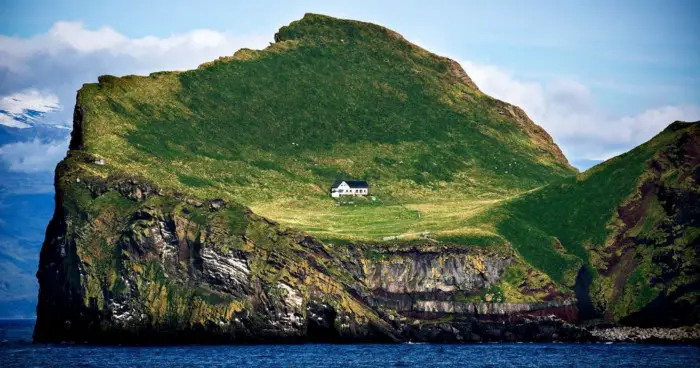In the southern region of Iceland, lie several small islands, mostly uninhabited. However, amongst them, there is one that stands out – Elliðaey. This tiny island gained fame in the 21st century for a solitary house situated in its center, which is surrounded by seclusion. If you are familiar with this image of a remote house on a deserted island, you may have questioned its authenticity, as many people still believe it to be a product of photoshop.
The solitary house on Elliðaey was constructed in the 1930s by five families who permanently resided on the island, surviving by hunting birds and fishing. Little information is available about the families who lived there during the 20th century, but it is clear that they preferred to avoid interacting with outsiders. While the Vestmannaeyjar archipelago, which encompasses 18 islands, is quite popular due to three of its islands being inhabited, this was not the case in the early 1900s. Despite the islands being regarded as some of Iceland’s natural wonders, they are barren, lacking vegetation and other interesting natural features. Consequently, until the 1970s, fishermen, who were the only individuals to catch sight of the islands, had little incentive to explore them. The most widely circulated image on the internet, similar to the first picture in this article, makes the island appear diminutive, but in reality, it is much larger.
Elliðaey island spans approximately 110 acres (0.4 square km) and is home to a single species of Nordic bird – the puffin – which is considered a delicacy. In the 1990s, local puffin hunters adopted the uninhabited house on the island and converted it into a hunting lodge where they would stay for a few days during the hunting season. Although the house lacks electricity and running water, it has a sophisticated rainwater collection system that provides water for drinking and washing. Despite its age and lack of maintenance, the house remains in excellent condition.
Numerous misconceptions surround the remote house and island, from rumors of haunting to claims that it belongs to a billionaire who is awaiting the zombie apocalypse. One widely publicized but entirely false misconception is that the house is owned by Bjork, the renowned Icelandic singer. This misconception originated in 2000, when the Icelandic prime minister at the time, David Oddsson, mentioned in a public speech that he would allow Bjork to reside on the island for free.
Despite the prime minister’s statement, the singer never bought the island or the house on it, so there is no connection. The island and house are still used by hunters and fishermen, but visitors are welcome to explore the island at no cost and even spend a few days there, provided they have access to a boat and bring their own provisions if they do not wish to hunt puffins.
